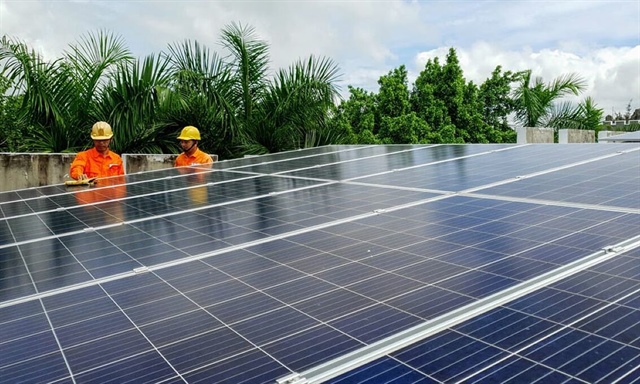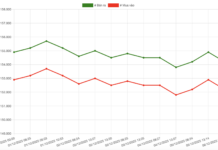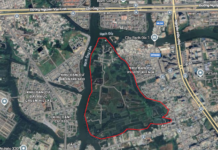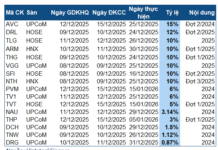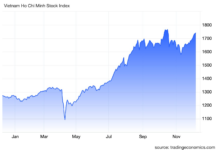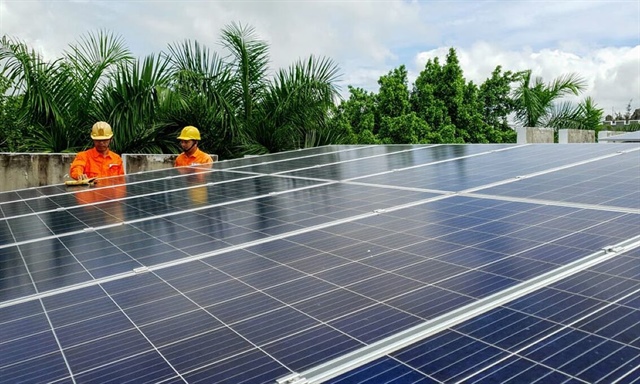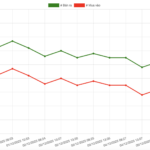In a draft Decree released for feedback last week, the Ministry of Industry and Trade (MoIT) proposed that rooftop solar power systems installed at residential buildings and public offices for self-consumption and grid connection would not be eligible for sale or would be sold at a price of 0 VND. In other words, residents can sell excess output, but the government will only record the production volume without paying for it.
Commenting on this proposal, Dr. Nguyen Quoc Viet, Deputy Director of the Vietnam Institute of Economics and Policy Research (VEPR), stated that investing in rooftop solar power systems without the option to sell or selling at 0 VND is “unfair and goes against market principles”.
According to calculations, a 5 kW rooftop solar power system for a residential building, integrated with a 5 kWh storage device, costs approximately 80-90 million VND. If a 10 kWh storage battery is installed, the total cost will be 100-120 million VND. The equipment comes with a warranty period ranging from 5 to 12 years, depending on the type.
Such a system can help a household save about 450-500 kWh of electricity per month under the radiation conditions in Northern Vietnam. Correspondingly, with monthly savings of 800,000 VND to 1 million VND, the payback period is estimated to be around 7-10 years.
“It will be difficult to attract individuals and businesses to make the initial investment,” Mr. Viet said, adding that not being able to sell excess output or deduct it from consumption would be inefficient, especially in regions with significant performance differences throughout the year, such as Northern Vietnam.
Currently, rooftop solar systems account for about 6% of total electricity production in Northern Vietnam, and less than 0.4% in Hanoi. The majority of the capacity is concentrated in the South and Central regions (nearly 90%). Of this, the proportion of installations on individual rooftops and civil works is 17%.

Workers installing a rooftop solar power system. Photo: VGP |
Energy expert La Hong Ky assessed that recovering the investment in Northern Vietnam would be challenging, making investors reluctant to invest. The climate in the region is divided into four seasons, and the amount of solar radiation varies significantly throughout the months, making it difficult to calculate the capacity for self-consumption and grid connection.
“Therefore, a mechanism is needed for the Vietnam Electricity Group (EVN) to purchase a portion of the excess electricity,” Mr. Ky proposed and suggested that this mechanism would encourage investment and contribute to the balanced development of this energy source across regions and localities.
If not selling to EVN, Mr. Nguyen Quoc Viet proposed that residents be allowed to deduct the consumed output during the billing period as credit, or calculate it at a certain percentage of the grid electricity purchase price.
The reason for discouraging rooftop solar systems from selling excess output to the grid, according to the MoIT, is that it could affect the safety and security of the system. This is because this electricity source depends on solar radiation and weather conditions, which are unpredictable. When there is no solar radiation (due to clouds, rain, or at night), the national grid must still ensure an adequate electricity supply. In other words, the system must have a backup power source (hydropower, thermal power, etc.) to guarantee stable operation in the face of rapid changes in renewable energy. In addition, the management agency also wants to control the total capacity nationwide in accordance with Power Plan VIII.
In addition to selling to EVN, experts propose allowing rooftop solar systems to be bought and sold between organizations and individuals who are “neighbors”. In its feedback to the MoIT, the Vietnam Chamber of Commerce and Industry (VCCI) suggested amending the regulations to permit sales between customers within a building without transmitting electricity through the national grid. “This will help balance the load better by reducing the amount of excess electricity,” according to VCCI.
Energy expert Ngo Duc Lam said that selling electricity to “neighbors” is implemented quite simply in other countries through dedicated lines. In Vietnam, he proposed allowing sales through the grid, and EVN could collect an additional fee for line management.
This mechanism is also considered necessary for manufacturing enterprises in industrial and export processing zones, where demand for clean energy is projected to increase sharply in the coming years. “For these enterprises, renewable energy from rooftop solar systems helps reduce costs,” Mr. Viet said.
For example, according to a survey conducted in an industrial zone in Hai Phong, three rooftop solar power projects with a total capacity of 3 MW generated 5,800 MWh in 2023. This output helped businesses save approximately 10 billion VND per year.
“If industrial zones purchase directly from investors or install renewable energy themselves, they can reduce their costs by 15-30% compared to buying from EVN,” Mr. Viet said.
Similarly, according to Phan Cong Tien, an expert in renewable energy, the cost of generating one kWh of rooftop solar power is estimated at less than 1,000 VND (about 5 cents/kWh), lower than the current retail electricity price (over 7.8 cents/kWh). Using this electricity source, Mr. Tien said, will help reduce the electricity purchase costs of enterprises.
However, even if the initial financial constraints are addressed, the lack of a mechanism for buying and selling electricity remains a barrier that makes businesses in industrial zones hesitant to invest in this type of energy. Businesses have the financial resources to invest but are concerned about the possibility of recovering their investment if they cannot sell the excess electricity. On the other hand, many manufacturing units want to use renewable energy to obtain green certificates for export. Therefore, the Deputy Director of VEPR proposed that the government allow the establishment of a market for sales between investors and manufacturing enterprises.
He believes that this approach aligns with market supply and demand, creating conditions for investors in industrial parks, intermediary funds, and installation solution providers to cover the investment and installation costs of these renewable energy systems. In return, businesses would have access to clean energy sources at reasonable prices.
Currently, Vietnam has over 103,000 rooftop solar power projects with a total installed capacity of over 9,500 MW. According to Power Plan VIII, the scale of this type of source by 2030 will increase by an additional 2,600 MW or reach 50% of public buildings and residential houses.
However, according to Mr. La Hong Ky, there is currently no set of technical standards applicable to components such as solar panels, storage devices, and batteries. This leads to a lack of strict quality control for these systems, posing potential risks to safety, fire prevention and fighting, and the stability of the electricity supply.
Connecting to the grid for buying and selling can compromise grid safety. Therefore, experts believe that the management agency should issue specific regulations on equipment, fire prevention and fighting, acceptance procedures, maintenance and inspection, and periodic testing.
In addition, to avoid rapid development, Mr. Phan Cong Tien suggests that the management agency provides an annual independent assessment report on the potential for integrating renewable energy into the electricity system. For example, in Australia, the Australian Energy Market Operator (AEMO) publishes such data annually on its website. This information allows businesses and residents to make informed calculations and decisions when installing rooftop solar systems.
Luong Phuong Dung
